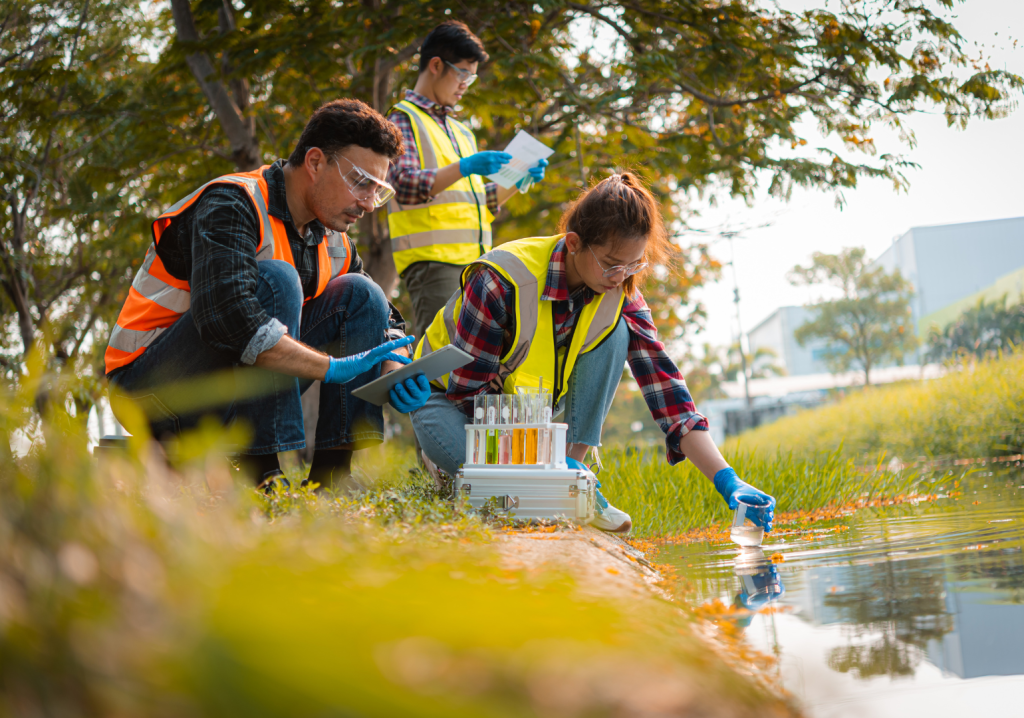A civil engineer’s tips for strategically channelling volunteers’ enthusiasm to ensure both personal and organisational goals are met.
Engineers are in a prime position to take on volunteering leadership roles. Our skill set – such as being natural organisers, problem-solvers and managers – is largely transferable to non-traditional engineering or non-engineering organisations.

Large organisations such as Engineers Australia often provide an extensive range of volunteering opportunities, with more than 40 groups in Queensland alone.
There are also many industry associations and community groups that need or can benefit from engineering expertise. For example, I’m on the executive committee of the Infrastructure Association of Queensland and also the management committee for Zero Emissions 4075, a local community-based group focused on educating residents and businesses within the 4075 postcode area to reach net zero.
But in my experience, volunteer organisations – from my daughter’s netball club through to professional organisations and community groups I’m part of – often lack effective leadership.
While people bring plenty of enthusiasm and good intentions to volunteering, that energy needs to be harnessed and directed to make a difference.
1. Learn to become an impactful leader
I became the Chair of Engineers Australia’s College of Leadership and Management (CLM) Queensland Branch in 2021 after joining the committee in 2020.
I had been considering for some time how to give back to the profession, and joining the committee offered a big-picture opportunity that piqued my interest.
After stepping into this role, I learned that in order to be an effective leader of a volunteer organisation, you need to drive the agenda, and set expectations and responsibilities to give volunteers the guidance and direction they need.
While leading a volunteer group can be a big time commitment, stop short of taking everything onto your plate and instead empower your volunteers to act. A mistake a lot of people make when stepping into volunteering leadership positions is feeling that they need to do everything or it won’t get done.
2. Build strong relationships
All volunteers want to do or achieve something. But if the structure of the organisation prevents them from achieving their objectives, they won’t invest the time and effort, and will ultimately leave through frustration.
One of the roles of a volunteer leader is acting as a conduit between the volunteers and the bureaucracy to create a path for them to get the most out of the experience.
But it can take time to identify and build relationships with the key stakeholders, and know what the interface points and boundaries are within the organisation.
I always explain to volunteers that I’ll do what I can to allow them to achieve their goals within the constraints and objectives of the organisation.
When people first join a committee, they are often not too sure of their place in it and what they’re permitted to do. I find it takes between four and six months before they feel confident enough to engage, and understand what the committee is and their place in it within the limits of what they are able to do.
One of the initiatives the new chair of the CLM committee is rolling out this year, based on our learnings, is a partnership between new members and existing members to speed up this process. The “buddy system” will also provide opportunities for new members to engage in one-on-one chats, so they don’t feel overwhelmed asking questions in front of the entire committee.
3. Find new ways to motivate members
Once you’ve engaged a volunteer, the next step entails keeping them motivated.
With no salaries, financial perks or benefits on offer, this process is different to motivating an employee in the workplace.
Showing appreciation is therefore key – which entails not only recognising volunteers within the organisation, but also publicly.
When volunteers from our CLM team run events or initiatives, I always ensure they take the limelight. Rather than the chair delivering an address, those who bring an event together should be the stars.
I also encourage them to post on LinkedIn under their own profile, so their posts can be liked and shared rather than using my own, and ensure they are tagged and mentioned in any posts I make.
4. Create a succession plan
After serving as chair of the Queensland branch for three years, I stepped down at the end of last year to allow someone else to take the reins.
Succession planning is vital to ensure there’s someone within the committee ready to jump into the leader’s shoes and continue building on the relationships you’ve created.
It’s important to prime and work closely with the vice-chair, who traditionally progresses to becoming the leader, with the expectation of stepping in and taking over.
Life and work commitments are always going to crop up, so there needs to be enough flexibility to allow roles and responsibilities to be covered by another volunteer.
5. Reap the benefits
Engineers who take on volunteer leadership roles can expect these experiences to feed into their personal growth and development.
Tasks such as running and managing budgets show you’re developing fiduciary and governance skills, which are sought after when looking to join corporate or not-for-profit boards.
By communicating with people in other organisations at a leadership level, you will also learn to communicate like a leader.
While I still hope to make improvements in engaging and motivating volunteers, the people I have led appreciate the freedom and flexibility afforded within the organisation’s set expectations. At the end of the day, they are still volunteering.
